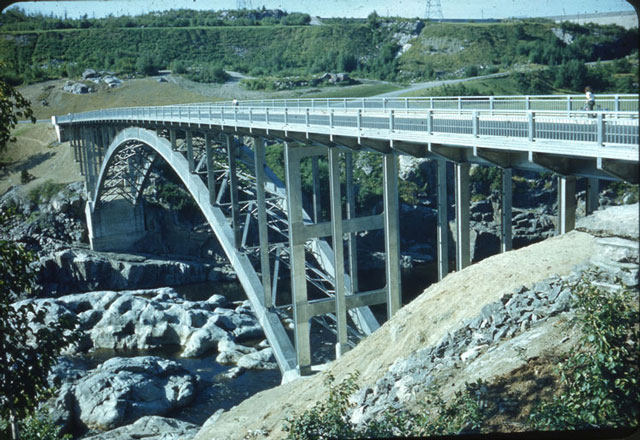Designation of Arvida as a National Historic Site of Canada
In 2012, the Government of Canada designated Arvida a National Historic Site of Canada. The commemorated district* covers the three heritage sites designated by the municipality in 2010: the city built in 135 days, Neilson Street area, and the Manoir du Saguenay area. Historically united, the components that make up this district are also united from an aesthetic standpoint, since they illustrate the formal research conducted in Arvida to produce a favourable environment for workers in order to let the city itself become the company’s trade mark.
Federal authorities have acknowledged that the Arvida district is of such architectural, artistic, iconic, scenic, urbanistic, aesthetic and historical interest that its awareness, protection and presentation are of undeniable public interest on a national level. The district is an eloquent testimony to the rich history of the company town Arvida once was, and together with the surrounding areas of the model town, attests to its original contribution, measured on the world stage, to the historical overview of planned industrial cities. Its homogeneity, consistency and landscape coherence, make it recognizable; it contains a remarkable proportion of architectural components of interest in a good state of conservation; and it represents unique examples of distinctive landscape diversity of a company town.
More specifically, Parks Canada Agency supports the Arvida district’s historical importance for the following reasons:
- The City of Arvida is a great combination of urban planning concepts from the past, such as the City Beautiful Movement, Garden City, and also follows more modern insights of “contour planning”, the hierarchical structure of traffic routes and the federation of neighbourhood centers. This synthesis results in an organic layout that follows the topography of the land, the omnipresence of green spaces, parks and trees, and the picturesque character of landscapes scattered with suburban houses free of fences and obstacles, as if they sprung from the ground.
- A well-preserved example of a mono-industrial Canadian town, Arvida represents a unique quality labour housing project, where the fast paced construction of a diversified urban landscape was achieved through a wide variety of house designs, some of which are a particularly successful architectural display of regionalist and neo-vernacular inspiration.
- Arvida’s development is associated with the first Canadian aluminum complex, and attests to the growth and evolution of the aluminum industry in Canada.
Arvida becomes part of the select group of 961 designated historic sites, since 1919. In 2012, there were 193 national historic sites in Quebec and only a handful of company towns commemorated by the federal government across Canada, despite their crucial importance in the development of Canada, of which Arvida is a notable example.
Written record of the designation of Arvida as a National Historic Site of Canada
 |
Map of the National Historic Site designated by the Minister of Parks Canada. |
Designation of the Arvida Aluminum Bridge as a National Historic Civil Engineering Site
In 2008, the Canadian Society for Civil Engineering designated the Arvida Aluminum Bridge as a National Historic Civil Engineering Site. The bridge's heritage significance stems from the significant engineering innovation that went into this demonstration of aluminum's structural strength. This overhead arch bridge, inaugurated on July 16, 1950, was the first long-span bridge in the world to be made entirely of aluminum.
 The Arvida aluminum bridge shortly after its construction, completed in 1950. Credits : Société historique du Saguenay. Fonds Alcan. F0170, S02, SS2, D02, P097. |
______________________________________
* “Historic district” is a term used in relation to heritage and is defined as “a city or part of a city containing an array of buildings of historic or artistic interest”. In this text, the term “district”, refers to sectors of Arvida that have been designed as a National Historic Site, rather than a municipal district.




 Official City of Saguenay website
Official City of Saguenay website